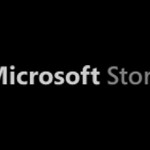 New York — No wonder that Flash based ad campaigns could be most powerful form of advertising, though it has long posed loads of problems for advertisers to measure how users are interacting with those ad widgets to see how effective those ads really are. In an attempt to overcome one of the most nettlesome challenges in analyzing Web content, Google Inc. earlier today announced on its Official Analytics Blog that the company is now teaming up with Adobe Systems Inc. to allow Google Analytics users to track Flash based content.
New York — No wonder that Flash based ad campaigns could be most powerful form of advertising, though it has long posed loads of problems for advertisers to measure how users are interacting with those ad widgets to see how effective those ads really are. In an attempt to overcome one of the most nettlesome challenges in analyzing Web content, Google Inc. earlier today announced on its Official Analytics Blog that the company is now teaming up with Adobe Systems Inc. to allow Google Analytics users to track Flash based content.
Now the newly introduced Google Analytics Tracking for Adobe Flash tool enables users of the free Google Analytics tool trounce the current challenges that disrupt the tracking of Flash content on Web pages, Google said.
“In the past, Flash tracking was not readily offered, and every execution had to be customized,” Nick Mihailovski, Analytics Specialist, wrote in a post on the Google Analytics Blog. “Moreover, there was a lack of standards, and new developers who tracked Flash had to create their own processes to get it working.”
“The announcement is the latest in succession by Google that hopes to make the analytics tool more attractive to corporate IT managers.”
With the API, Google Analytics will now be capable of tracking various uses of Adobe Flash in a website, including the number of viewers, whether the creative attracts new users and the effectiveness of the flash at getting visitors to take action. The API supports the Flash visual component, Flash AS3 library, Flex MXML component, and Flex AS3 library.
For example, Google last month added loads of new features into its AdSens program, including custom report generation, advanced segmentation and integration. And now even Google Analytics becomes more integrated with the Flash technology of today: although a limited set of Flash tracking tools was already available on Google’s tracking platform, the data was not well integrated with the rest of the content.
Flash developers are now providing a simplified way to keep track of user behavior when interacting with their applications. The new tracking code that lets webmasters to get detailed data on how visitors interacts not only with their websites, but also with the Flash content featured on their pages, and to integrate the results in a seamless way.
Google developers were able to simplify the tool’s ability to track Flash, Adobe Flex and ActionScript 3 by translating Google Analytics tracking code into the ActionScript 3 programming language, Google added. The new tool includes all the features in the JavaScript-based version of Google Analytics, such as campaign, page-view and event tracking, the company noted.
This new feature should help site owners figure out whether or not their Flash content is engaging visitors. A company called Sprout has tested it, and their Vice President of Engineering came away impressed.
“We know there are many stages of experience in the Flash/Flex community so we have attempted to make it easy for both non-technical designers as well as seasoned ActionScript programmers to take full advantage of this Google Analytics Tracking For Flash,” Mihailovski continued.
Accordingly, Flash developers can now seamlessly monitor how many people have watched the videos they develop to measure if they are developing the right type of content to attract new users, Mihailovski added.
Google is providing libraries for both Flash and Flex to make it easy for advanced ActionScript programmers and non-technical designers to use the Google Analytics Flash tracking tool. In addition, Google is providing its entire ActionScript 3 code base as open source under Apache License 2.0.
“If you are a developer and want to improve the code’s functionality, you can contribute to the code base,” Mihailovski noted. The full API can be downloaded from here. As usual with open source products, programmers are encouraged to contribute to the product and make it even better and more efficient: to contribute to the development process programmers can visit the Google Code website, while online documentation for the API including samples is available from this page.


